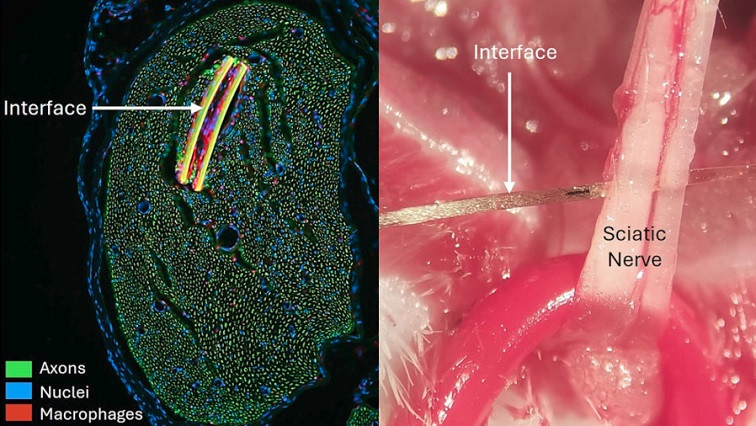After an amputation or a severe nerve injury, patients lose to a greater or lesser extent the ability to move and feel a lost limb, which limits their autonomy in activities of daily living. Currently, the only strategy that allows to recover the lost functions consists of neuroprostheses: electrodes capable of stimulating the nerves, to induce specific sensations, and of recording motor signals that, once decoded, can be sent to a bionic prosthesis.
In the design of neuroprostheses, it is important that the electrodes are small enough that they are selective and interact electrically only with a reduced number of axons in the nerve. Therefore, although they have commonly been constructed from metals such as gold, platinum or iridium oxide, it is necessary to find other materials that have enhanced conductive capacity and allow the creation of even smaller electrode contacts. This is where graphene and its derivatives come into play; their excellent electrical properties have allowed the development of a new generation of microelectrodes.
A research coordinated by the UAB Institut de Neurociències (INc-UAB) has studied the capacity of a new material derived from graphene, EGNITE, to stimulate and record from the peripheral nerve. Furthermore, its biocompatibility has been validated, which is key for preserving the function of the interface over time. The research was carried out in the Neuroplasticity and Regeneration group of the INc-UAB, led by professor Xavier Navarro of the UAB Department of Cell Biology, Physiology and Immunology, in collaboration with Jose Garrido’s research group at the Institut Català de Nanociència i Nanotecnologia (ICN2), which was in charge of developing the EGNITE together with the neural interfaces.
These electrodes, implanted in rat sciatic nerve, were shown to be capable of producing selective muscle activation for up to a maximum of 60 days. “The reduction in the electrical current necessary to produce this muscle activation is notable in comparison to other larger metal microelectrodes”, explains Bruno Rodríguez-Meana, postdoctoral researcher at the INc-UAB and first author of the article. Furthermore, the electrodes with EGNITE demonstrated to be biocompatible, since none of the functional tests showed significant alterations produced by the implanted interfaces nor was exacerbated inflammation observed.
“The next steps will consist of the optimization of the EGNITE-based technology and its application in pre-clinical studies for vagus nerve or spinal cord stimulation systems. In parallel, progress is being made towards its clinical translation in bioelectronic medicine approaches", explains Professor Navarro.
Together, these results indicate the potential of the material derived from graphene to be part of neuroprostheses that allow patients to recover lost functions, thus improving their capacity and quality of life.
Read the original article on Autonomous University of Barcelona.







